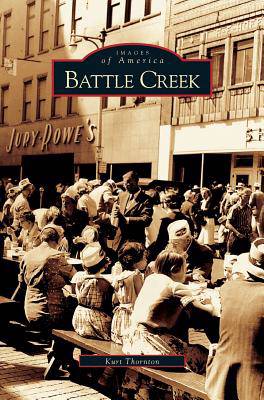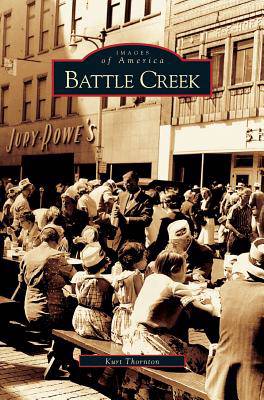
- Afhalen na 1 uur in een winkel met voorraad
- Gratis thuislevering in België vanaf € 30
- Ruim aanbod met 7 miljoen producten
- Afhalen na 1 uur in een winkel met voorraad
- Gratis thuislevering in België vanaf € 30
- Ruim aanbod met 7 miljoen producten
Zoeken
Omschrijving
In 1825, two government surveyors platting the southwest Michigan territory engaged in a small skirmish with two Native Americans. With a humorous nod, the surveyors gave the name Battle Creek to the river where this encounter took place. A few years later, a group of entrepreneurs, led by Sands McCamly, established a milling community and named it after the river. Thus the city of Battle Creek had its start. Over the following 170 years, it has grown into a thriving community of culture and character. This book uses historical photos and rare illustrations to trace Battle Creek's chronological development, from its water-powered mills, its railroads and factories, and its identity as a major stop on the Underground Railroad to its eventual pre-eminence as the "Cereal City."
Specificaties
Betrokkenen
- Auteur(s):
- Uitgeverij:
Inhoud
- Aantal bladzijden:
- 130
- Taal:
- Engels
Eigenschappen
- Productcode (EAN):
- 9781531618735
- Verschijningsdatum:
- 11/08/2004
- Uitvoering:
- Hardcover
- Formaat:
- Genaaid
- Afmetingen:
- 170 mm x 244 mm
- Gewicht:
- 412 g

Alleen bij Standaard Boekhandel
+ 88 punten op je klantenkaart van Standaard Boekhandel
Beoordelingen
We publiceren alleen reviews die voldoen aan de voorwaarden voor reviews. Bekijk onze voorwaarden voor reviews.











